Background
In the main, Suppliers are signposted to the Carbon Top3Map (CT3M) by their Customers. These Customers typically encourage their Suppliers to complete it: so that they can benchmark their cost/carbon reduction readiness relative to the UK National Average, and elements of national standard for embedded carbon footprint measurement (PAS 2050 ) that are under a managements control.
Customers subsequently use the Carbon Top3Map
(CT3M) benchmark they instigate to focus
their Suppliers' on a business
development areas that should lead to a reduction in the cost of carbon
passed onto them. At the same time they are signposting
Suppliers to government funded business support providers: who can help their
Suppliers to be more competitive. At the bottom of this page a
selection of the providers
engaged to date is shown for reference purposes.
Four Examples of how CT3M is used by Customers to Instigate Cost and Carbon Reduction with their Suppliers
1. Benchmarking Against The Six Elements of PAS 2050 Under A Managements Control
In the example below, the Carbon Top3Map (CT3M) was used to benchmark a Customer's supply chain against the national average relative. As one can see below, the Customer's average supply chain faired better that the UK average in all areas except attributing energy consumption to business processes and products. However, within the supply chain one Supplier was fell below the national average in its ability to obtain commitment from its suppliers to share energy consumption by process and product. This meant that the Customer could not effectively reduce carbon in its supply chain, and its carbon footprint. The Supplier was subsequently signposted by the Customer to a free-to-use government service which was able to assist it to build a better working relationship with its suppliers (in this case, the UK Manufacturing Advisory Service), and the whole supply chain was signposted to an agency that could assist it to consider energy monitoring (in this case, the Carbon Trust).
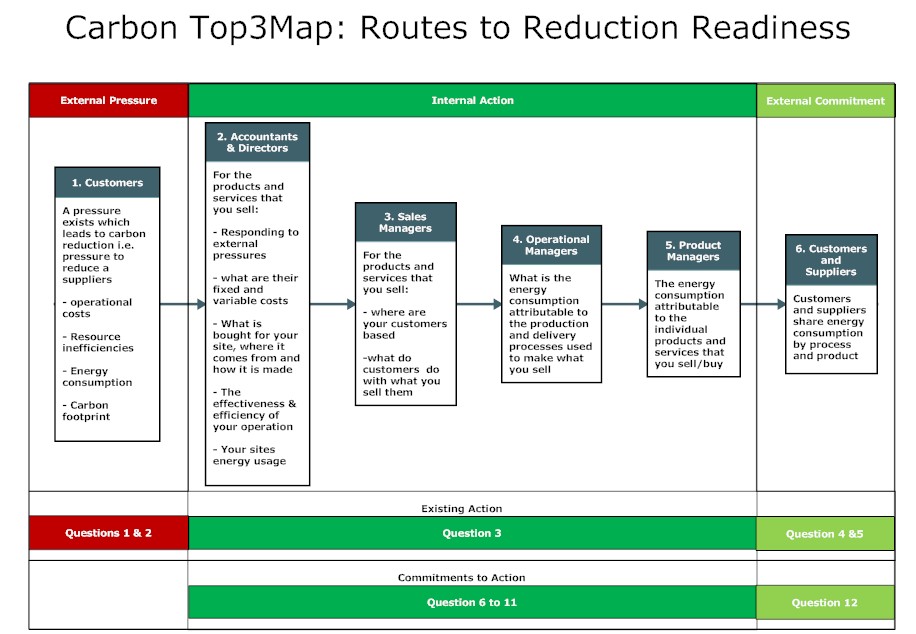

2. Benchmarking Against Business Pressures, Internal Readiness and Support Readiness
In the example below a CT3M Summary Benchmark is sent by a Customer to a Supplier (Company X) along with details of local business support providers who can assist the supplier to improve its use of cost/carbon management best practice - relative to the CT3M UK National Average.
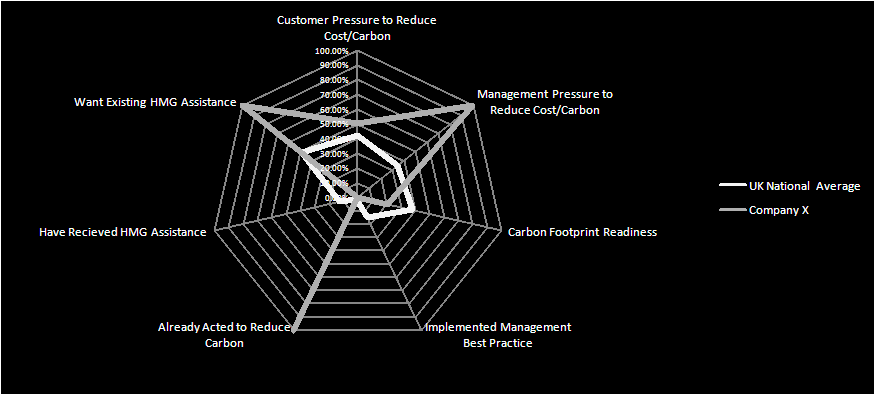
3. Benchmarking to Focus Specific Business Support Agencies
In the example below, a Customer is able to show a government's manufacturing support service that one of its suppliers (see Company X below) needs to be assisted to expand its knowledge of its own suppliers processes, and implement cost management best practice: to come up to speed with the Customer's existing supply chain (see Supply Chain Y below), and to beat the CT3M UK National Average.
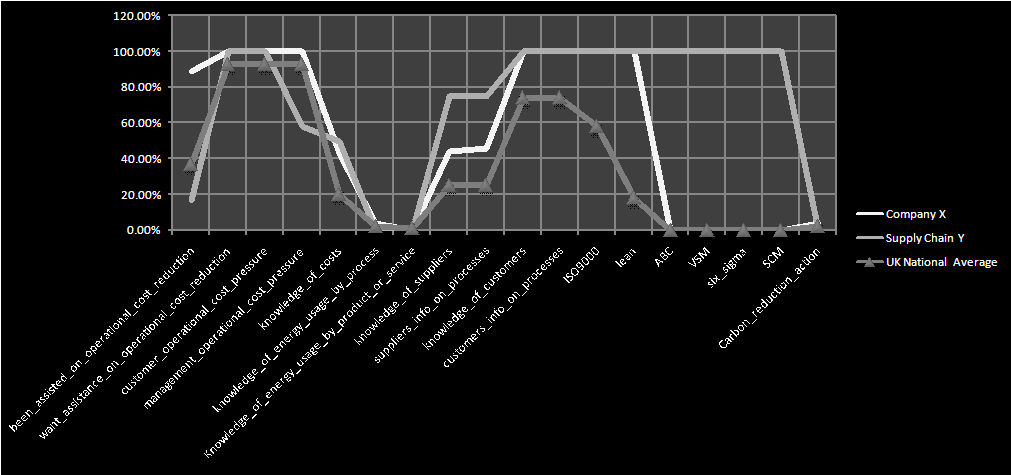
In the example below a Customer is able to show a government's resource efficiency service that one of its suppliers (see Company X below) needs to be assisted in the area of environmental management: to come up to speed with the Customer's existing supply chain (see Supply Chain Y below), and to beat the UK CT3M National Average.
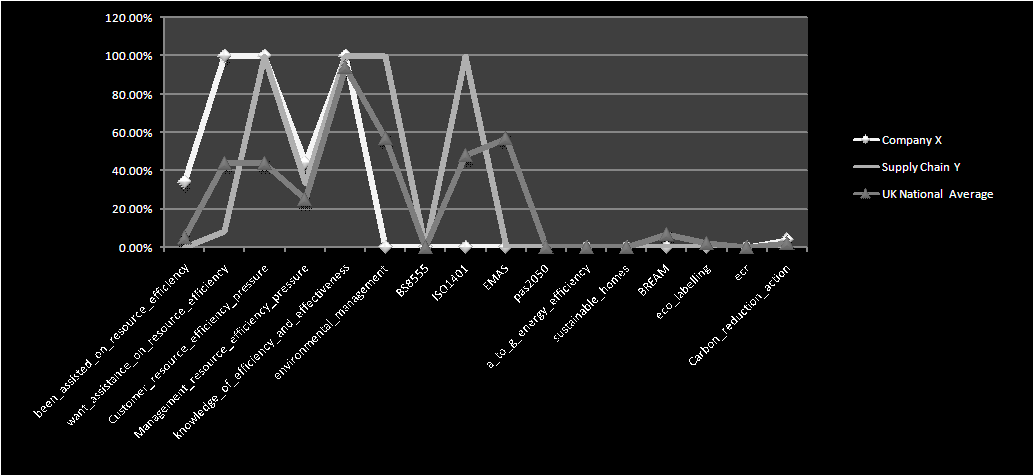
In the example below a Customer is able to show a government's energy and carbon efficiency service that its complete supply chain needs to be assisted to address energy efficiency to come up to speed with the CT3M UK National Average.
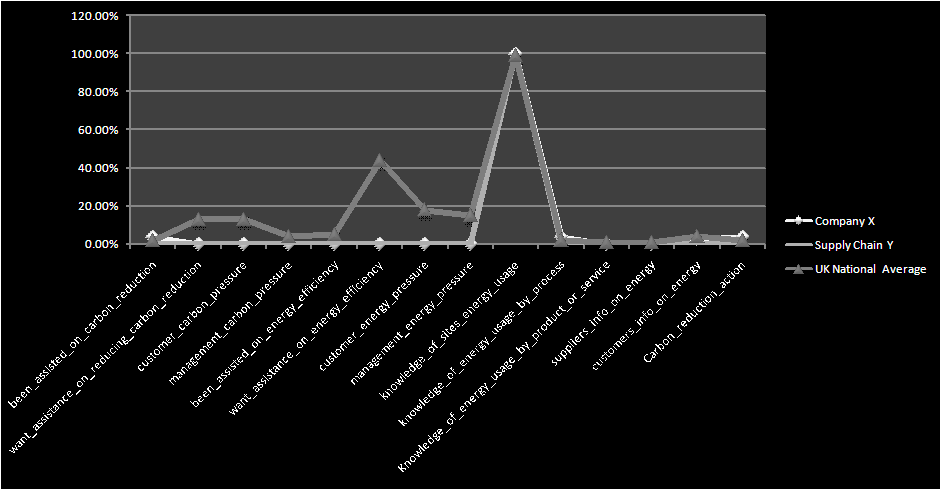
4. Benchmarking Trade Association Members to Focus Business Support Upon a Sector
In the example below a Customer is able to show its trade association that it should assist it to engage business support providers: because its suppliers need to come up to speed with the CT3M Sector Average in the area of cost/carbon management best practice relative to the CT3M UK National Average.
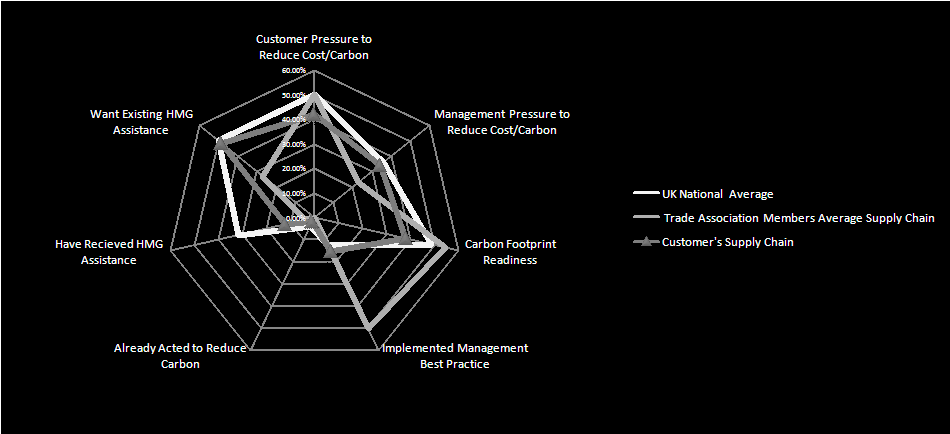
Here are the next steps that are typically pursued.
1. You choose the email address to which your supplier's Carbon Top3Map data should be sent i.e. your email address
2. You send an email along the following lines to your suppliers:
__________________________________
We wish to make you aware of a free-to-use cost/carbon reduction benchmarking service (See Carbon Top3Map) developed for the Department for Business Innovation & Skills.
It aims to increase your success in the area of cost/carbon reduction, and accreditation to the standard for Carbon Footprint Measurement: BSI PAS 2050 (see PAS 2050)
If you so desire, the service also points you towards forms of business support assistance that could help you address cost/carbon reduction
We sincerely recommend you use this service. If you do, then please include my email address at the beginning of your response. This will enable the service providers to show you where you stand relative to our supply chain, as well as the national average.
For further details please contact Experto Crede on 0207 659 2005 quoting my email address.
__________________________________
3. We then handle supplier enquiries
4. They complete the Carbon Top3Map
5. They receive a breakdown of where they stand relative to the national average and your supply chainís average.
6. They are given details of government assistance available in their region if they so desire.
7. You receive a benchmark of where individual suppliers sit against the national average.
8. You understand your ability to undertake PAS2050 and your suppliers ability to support you in cost/carbon reduction activity
__________________________________
Examples of UK Pan-Regional business support providers funded by government include:
|
|
|
 |
 |
|
|
 |
|
 |
 |
 |
Local support to increase suppliers low carbon readiness is not restricted to pan-regional or UK initiatives. This is good news: as Customer's supply chains cross regional and national boundaries. To increase awareness of free-to-use support please click here